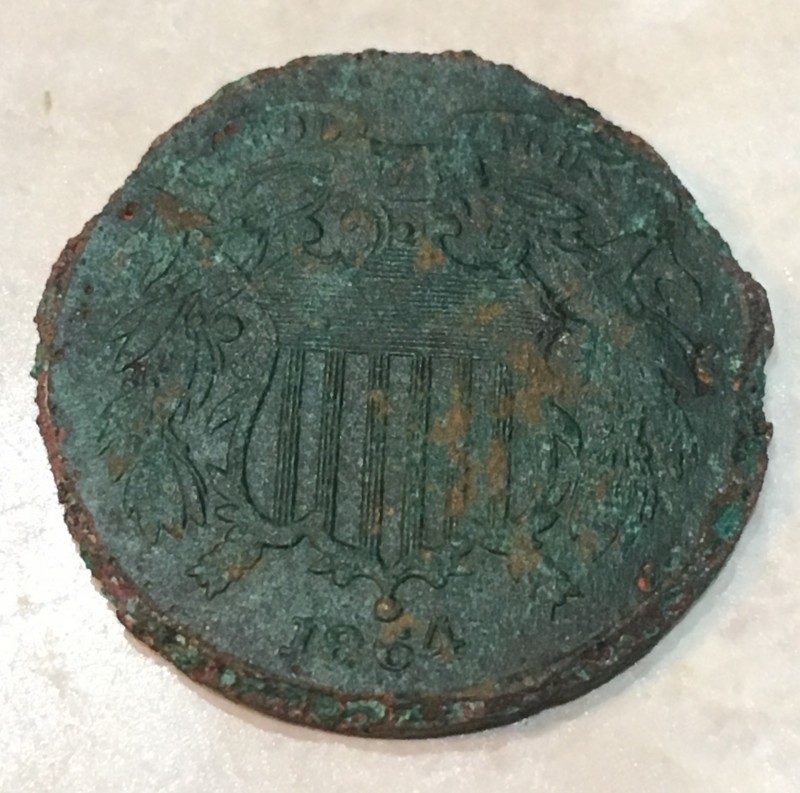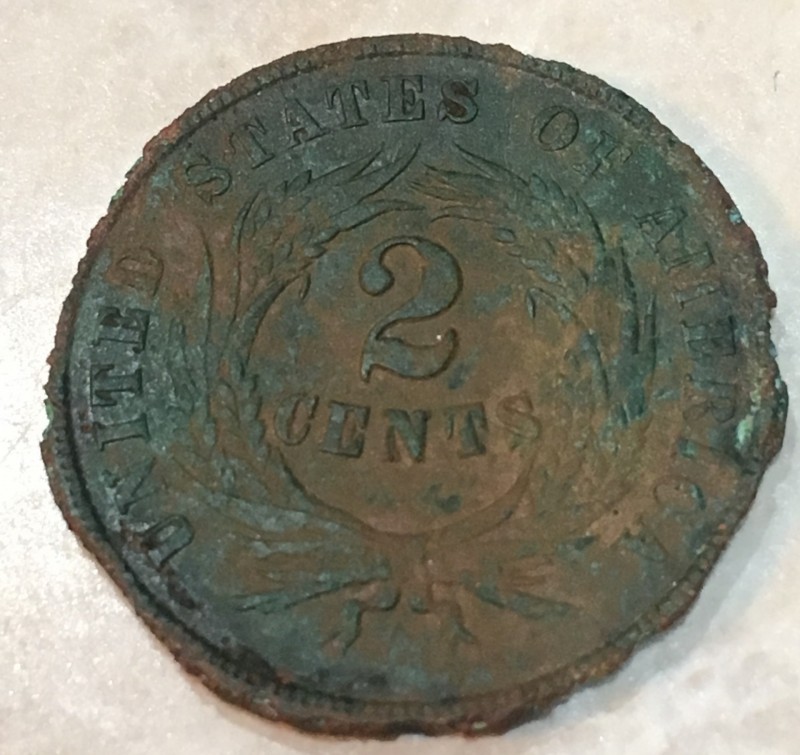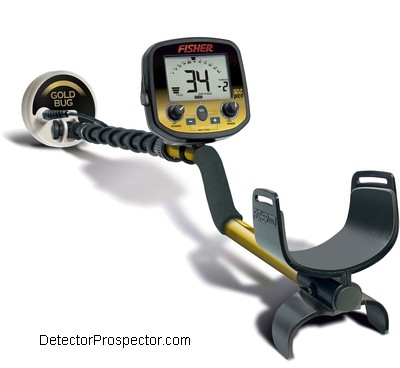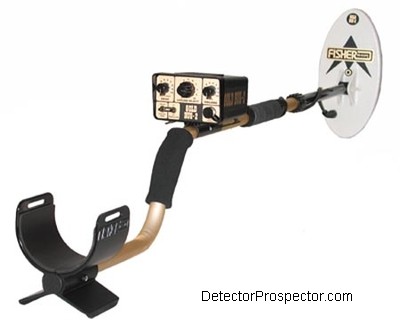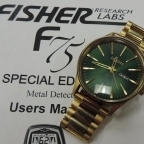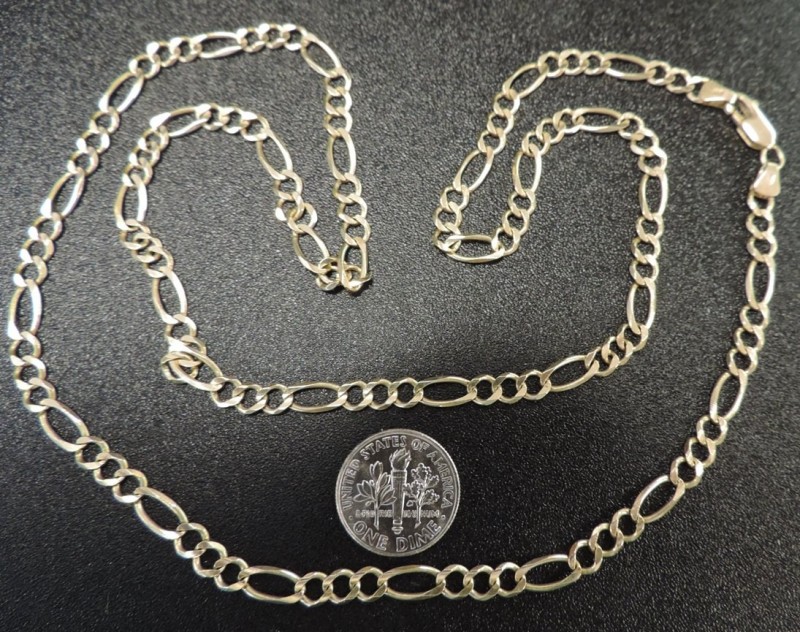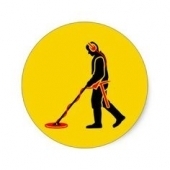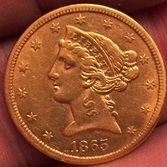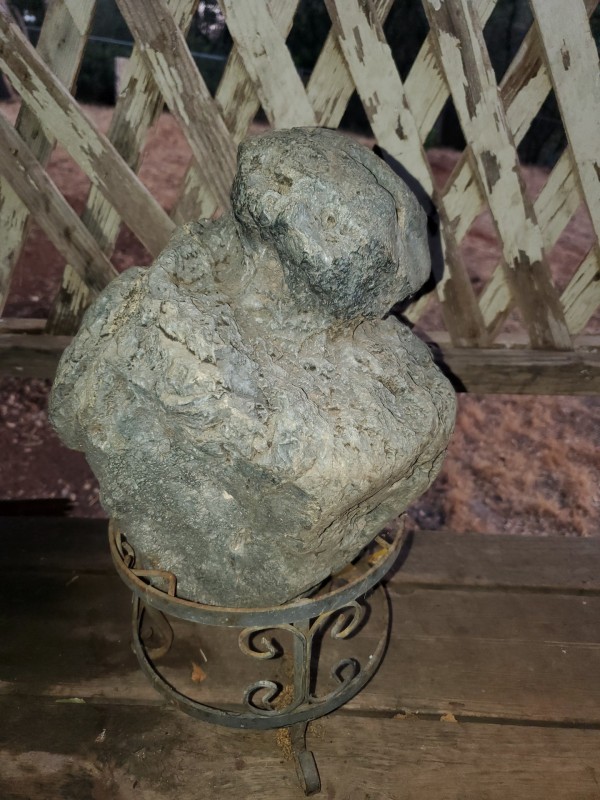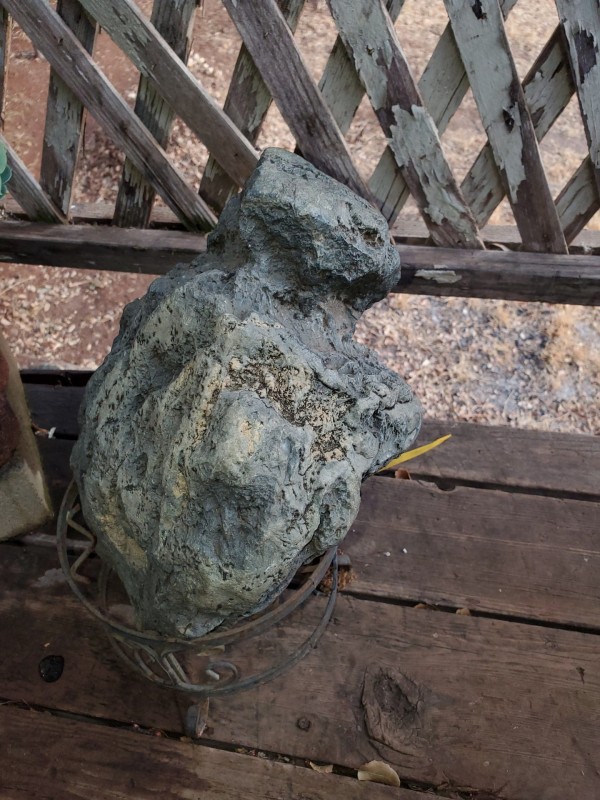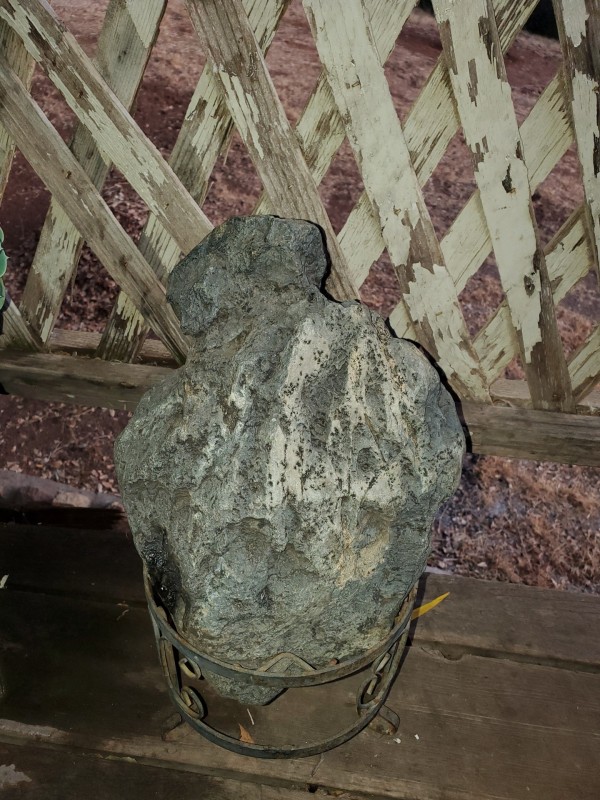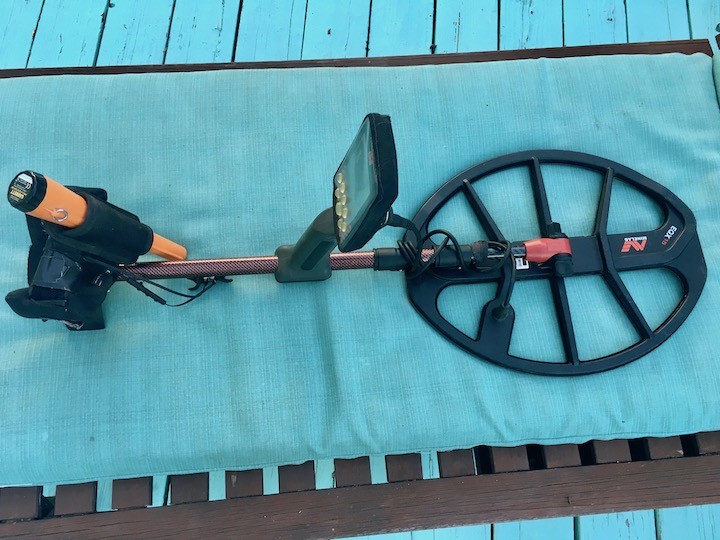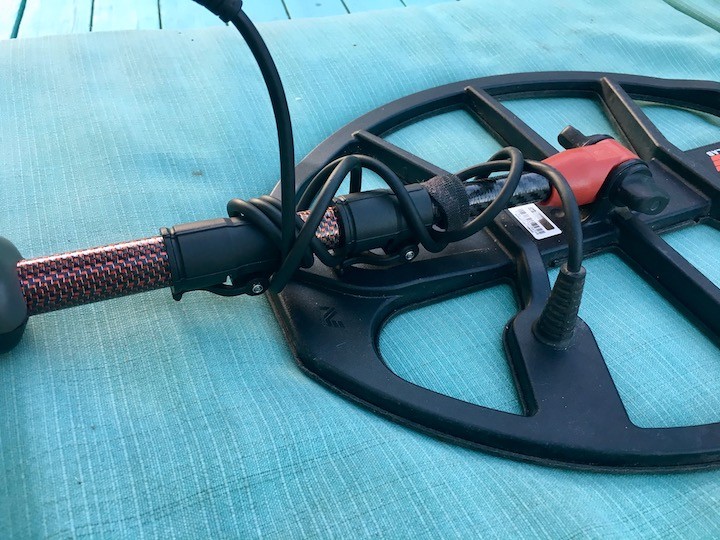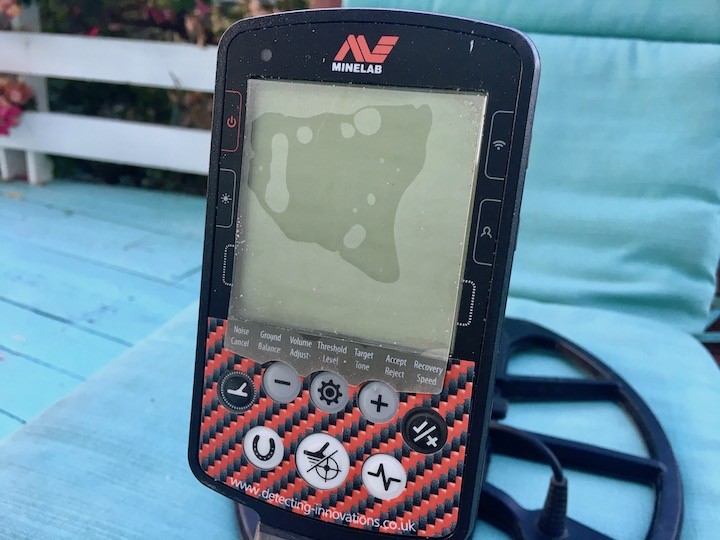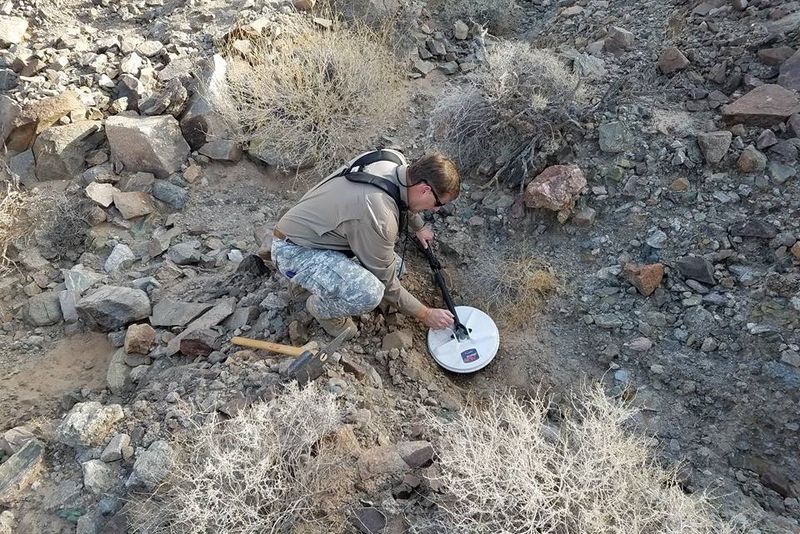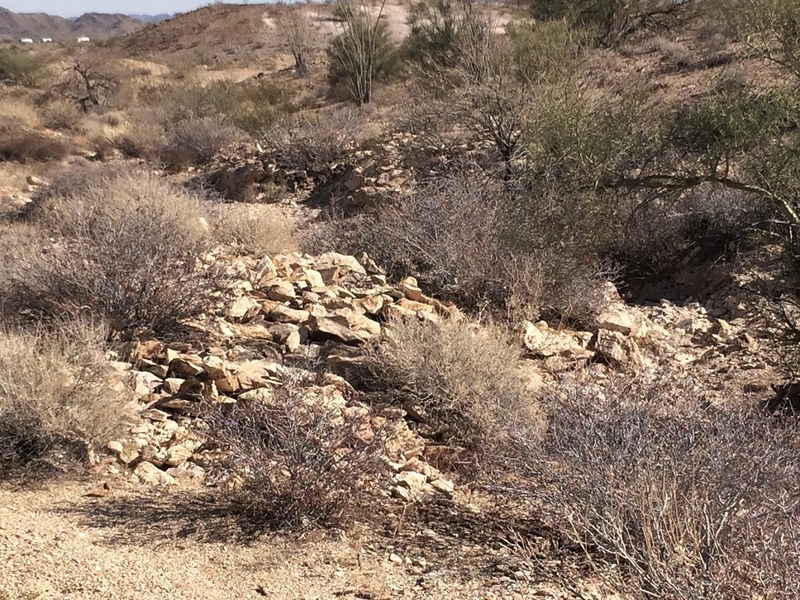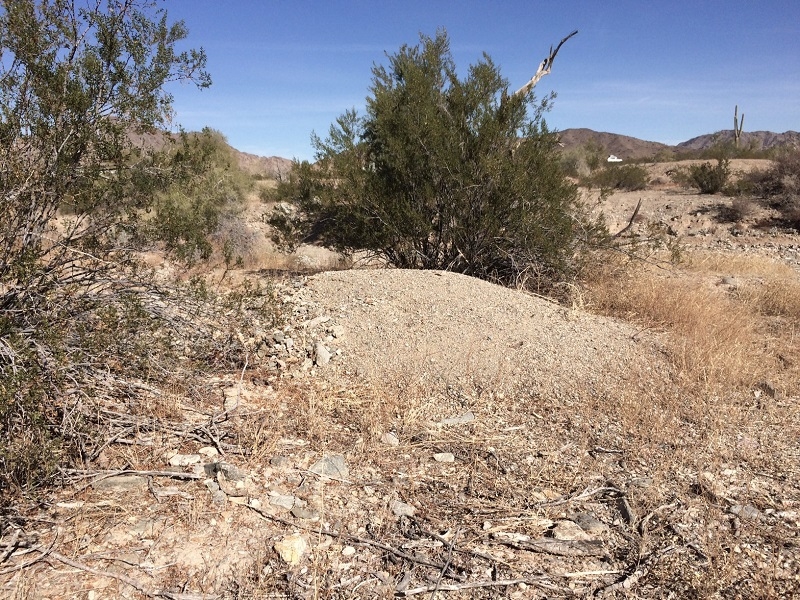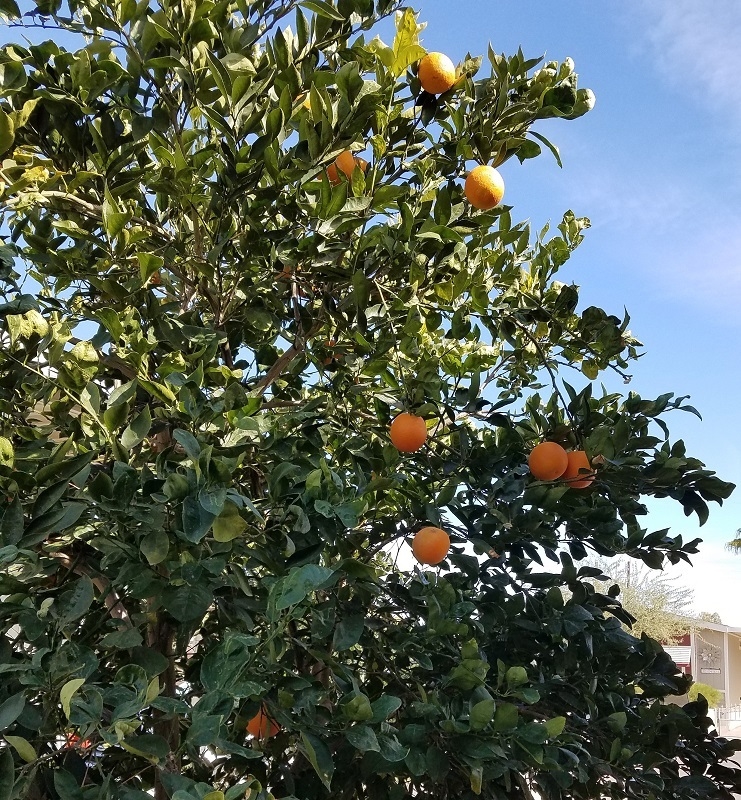Leaderboard
Popular Content
Showing content with the highest reputation on 09/12/2019 in all areas
-
Hi guys. Been really sick, still am kind of, recovered about 50%. But came back and saw some notifications. Two can't find. But, I reckon before I got sick I shot off at a member here and may have got it wrong. So, you know who you are and no hard feelings mate, my bad this time. To the Boss, Steve, same, my bad. Still not right though, real bad virus. Haven't felt like this in over 20 yrs. Got fed up of laying around coughing, sweating, nausea so got out. Felt great, kind of, short sessions though and glad to get home. But small wins regardless. 1st pic at the head of a deep lead in the very very last throw outs going up a mountainside. 2nd total virgin ground, very scattered, no rhyme or reason, been there before and it's like "toss a coin" direction you go.9 points
-
I saw some of the guys in Australia make a Trumpet to deflect the sound upward from the speaker on the sdc. Great idea, but shipping was a bit much, so I cut a 90 pcv fitting in half and used velcroe to attach. Cheap little project and does add a noticeable increase in sound coming up from the speaker.4 points
-
There is a lot of meat in this article! https://www.popularmechanics.com/adventure/outdoors/a20066497/shawn-ryan-ground-truth-gold-rush/3 points
-
This was a rather large update. Not so much in any of my reviews but a major shuffle in prices which changes the equation on some units as far as desirability. Steve's Guide to Gold Nugget Detectors Here are the highlights. THIS IS NOT THE FULL REVIEW, IT’S THE CHANGES ONLY.... FOLLOW THE LINK ABOVE TO READ THE FULL REVIEW! The Nokta/Makro Gold Racer dropped from $599 to $509 putting it in direct competition with the Fisher Gold Bug (basic model $449) and Minelab X-Terra 705 Gold at $499 plus the Fisher Gold Bug Pro at $549. That's a killer deal for a 56 kHz full featured detector. All the Nokta/Makro models had serious price drops, as it appears the U.S. importer was keeping prices artificially high. Nokta/Makro stepped in and corrected the situation, leading to the decreases. The Nokta/Makro Gold Kruzer was reduced from $749 to $636, a couple bucks less than the Garrett AT Gold but the Kruzer is 61 kHz and comes with two coils. This effectively puts the AT Gold out to pasture as a “new with warranty” nugget detector option in my opinion unless Garrett lowers the price. Waterproof, built in rechargeable battery, wireless, 61 kHz and two coils... the Gold Kruzer may be the best package price available right now in a VLF nugget machine. The Tesoro Lobo SuperTRAQ was deleted from the list. Tesoro is out of business, and although a few of these may be on dealer shelves still the is no warranty on them so they are gone as far as I am concerned. The Nokta/Makro AU Gold Finder with two coils came down from $799 to $679, the same price as the now departed Tesoro Lobo. The Minelab Gold Monster went UP to $849! I still have it as a "Steve's Pick" but that could change to the White's Goldmaster 24K if White's gets more coils out. More and more users are giving the 24K a thumbs up. The 24K is $729 but do remember the Monster comes with two coils and the 24K just the one now that the Intro deal is over. My "Steve's Picks" are aimed at first time buyers so I am sticking with the Monster for now due to simplicity compared to other less expensive but more complicated options. The same reason I am still showing the Gold Bug basic as a pick - it's simple and effective. The XP ORX dropped from $899 to $795 with a $649 wired headphone option. At $649 it's a good deal. A note on the Minelab GPX 4500 - rumored to be discontinued soon but still on Minelab website as current. And finally Minelab SDC 2300 increased from $3750 to $3799 No doubt about it, competition really heated up in 2019 with lots of pressure on VLF prices. Now if we could get some competition going in the PI detectors in both price and ergonomics things would be great!2 points
-
Finally got to work on testing the 7 1/2DF, 8x6 Sadie, MJ 8x12, and 12"DF. Did a comparison on the 7 1/2DF and Sadie with both battery packs, and a comparison of the MJ 8x12 FM, and the Whites 12"DF at 16v. EDIT: I notice I cut off the early portion of the Miner John comparison. Hope you get enough of the sensitivity of that coil. It works very well on my SL. Jim2 points
-
2 points
-
Thanks mate. The 12 Evo, wicked little coil. Usually use the 15 but thought it wise being crook and low on fuel, me, to go light. All up just 6 grams. The better bit 2.4. But saying "just" is not being ungrateful for what I got or "wish it was more" but because it could look more as sometimes gold does. I am 100% grateful for every single bit I get no matter how small. And to anyone who finds anything no matter the size, it's a win. You can't and wont take it with you. 😉2 points
-
The Fisher Gold Bug Pro was released in 2010 and is still in production. It is the final version of a series of new digital Gold Bug releases intended to replace the older analog Gold Bug models. The easiest way to tell the new Gold Bugs from the old Gold Bugs is that the new models sport a prominent digital readout. The model is also marketed separately by First Texas, Fisher's parent company, as the Teknetics G2. The G2 has a different rod and handle assembly and comes standard with the 11" elliptical DD coil for slightly more money. The Gold Bug Pro comes standard in three versions - with a 5" round DD coil (actually 4.7" diameter), or with the 7" x 11" elliptical DD in which case it is called the Fisher Gold Bug Pro DP. Finally, there is a dual coil package the includes both the 5" round DD coil and the 5" x 10" DD coil. In addition to the three coils mentioned here DeTech markets the 13" Ultimate DD coil for the G2 that will work on the Gold Bug Pro. For more information see the Guide to Different Versions of the Fisher Gold Bug. I have come to rely on the Gold Bug Pro as my general purpose prospecting detector for when I want a unit that can handle trashy areas. I appreciate its light weight and simplicity in getting the job done. I prefer to run the detector in all metal mode for the best depth and sensitivity. The nice thing is that the meter always displays possible target ID information to help make digging decisions without having to switch or toggle to another mode. This is far more efficient in the field not to mention wear and tear on switches. I prefer the 5" x 10" DD coil for general use - it is too bad Fisher does not sell the Gold Bug Pro with that as the stock coil. The only way you can get it is as a package deal or as a separate accessory item. The only thing I wish was that instead of displaying the ground phase as a large number while in all metal mode the Gold Bug Pro instead displayed the possible target ID number. The target ID is displayed on a small "racetrack" display above the ground phase number. I rarely if ever need to know what the ground phase is but I constantly refer to the target ID. Hopefully this will be addressed in future versions. Fisher Gold Bug Pro - Gold Bug DP variant (7" x 11" DD coil) I normally hunt in all metal. The detector hits all targets with the same audio signal except the stronger the target, the stronger the signal. There is a little "speedometer" target id readout in all metal above the big ground phase reading and so after hearing target I work it and eyeball the reading. If you get no target id it is target deeper than disc can hit (all metal prospect mode goes deeper than discriminate mode) so dig until you get target id or target. You need to decide on what target id to dig and what to pass. In theory all 40 and above is non-ferrous so in theory just dig all 40 and higher. Reality is small gold or very deep gold can read iron. I usually opt for digging some iron, and so depending on types of ferrous trash and ground mineralization the actual number I choose may be 35-39, usually 38. Then, and this is key, work the target. If the number bounces even once to or above your chosen break point, dig. The numbers bounce around, and if they consistently read at or below your chosen reject number, for example 38, if the number is always 38 or lower pass it up. If it bounces even once to 39 or higher dig it. Again, number picked depends on actual ground conditions. Start lower, maybe 35, then adjust upwards after digging targets. As long as you are not digging too much ferrous stay put but is too much digging adjust higher. VLF discrimination can and will lie on small or deep gold so better conservative and digging at least some ferrous than leaving gold. Fisher Gold Bug Pro with 5" x 10" elliptical DD coil Ok, let's assume too much trash, to many signals to analyze each one. Go to disc mode. Immediate depth loss! But now we can set target id audio break point. The unique tone disc system has three tones, mid tone, low tone, and no tone (target rejected). You can move range but it is not totally adjustable. The low tone area compresses as the disc is set higher. If you set low tone cutoff at 30 all target below 30 make no sound at all and all passed up. You never know they are there. 30 to about 55 will be low tone, meaning most gold and small ferrous, 56 and above will be mid tone, usually brass but maybe big nuggets. There is no high tone on the GBP. You can adjust this potential gold tone range to a certain extent. Set at 35 and nothing below 35 reports, 35 to maybe 60 (doing this from memory so may be off a bit on the numbers) will be low tone, above 60 mid tone. Or if trash really is bugging you set at 39 so only 40 and above beeps. But because some targets read mostly ferrous but bounce non-ferrous at times it is a fuzzy choice. If you set for 40 and above and small nugget reads 38 on first pass, you miss it and never know it was there. At the end of the day it depends on trash level and how much target analyzing you want to do in the fuzzy zone. Most small nuggets actually read around 50 but again all depends on gold size, shape, purity, ground mineralization and other factors. ads by Amazon... Lots of nuance in what is a deceptively simple detector. The more I use it the more I appreciate it. In all metal with 11" x 7" DD it approaches PI depths on most average size gold in moderate to mild ground. I very much like having the dual ability of hunting in all metal while having visual target id. No toggling back and forth. I not only use the Gold Bug Pro for prospecting but for jewelry detecting. It is a not the best coin detector in the world but does well, especially in trashy areas with the little 5" coil. All in all a great little machine, one I can swing high and low all day long with little fear of arm strain. I highly recommend the Gold Bug Pro for anyone looking for their first nugget detector or for old pros like myself wanting something light, simple, and effective. Official Fisher Gold Bug Pro Page Download the Fisher Gold Bug Pro Instruction Manual Here Guide to Different Versions of the Fisher Gold Bug Forum Threads Tagged "fisher gold bug" First Texas (Fisher) Metal Detectors Forum Fisher Gold Bug Pro Technical Specifications* Internet Price Basic Gold Bug $499 / Pro $549.00 (5" coil) or $599.00 (7" x 11" coil) Technology Induction Balance (IB) Transmit Frequency 19 kHz Autotune Mode(s) Pre-Set Slow Motion Ground Rejection Manual Touch Pads with Grab Function Soil Adjust No Discrimination One turn control, Visual ID, Tone ID Volume Control No Threshold Control One turn control Tone Adjust No Audio Boost No Frequency Offset No Pinpoint Mode Yes Audio Output 1/4" headphone socket & speaker Hip Mount No Standard Coil(s) Choice of 5" round DD or 7" x 11" DD Optional Search Coils Many accessory coils available from Fisher and aftermarket Battery One 9V Operating Time 15 hours Weight 2.5 pounds with 5" coil Additional Technology Continuous ground phase readout Notes Also available as 5" plus 10"x5.5" DD two coil package for $749 *Notes on Technical Specifications - Detailed notes about the specifications listed in this chart.2 points
-
This is my latest "Nugget Detector Guide", now published for over twenty years, updated January 2024 with some of the latest model information. Each model has a short description, followed by a very PERSONAL OPINION. Copyright 2002-2024 Herschbach Enterprises - Please do not reuse or repost without my express permission. This is offered as a simple guide for those wanting a comparison of the various nugget detectors available new with warranty, along with some kind of real opinion about them. That's all it is, folks, so take it or leave it for what it is worth. It's just that listing specs is of little help to people, and so I take my best stab at providing some guidance for those newer to detecting. These are only my opinions based on my experience with various detectors over the years. While I do have a lot of experience, I must throw in the caveat that I have not used all detectors under all conditions. What may be considered a good detector at one location may not be so good at another location due to differences in ground mineralization and the gold itself. Detector performance is site specific and so your mileage may vary. Never forget that when reading comparisons on the internet. Although many detectors sold today can potentially find gold nuggets, I've chosen to only list current models from major manufacturers that are sold and marketed primarily as prospecting detectors or that at least have a specific prospecting mode. I no longer list general purpose VLF detectors running under 18 kHz because they are too common and that being the case they offer nothing special to the potential gold prospector. If you are interested in other general purpose detectors that might make good prospecting machine but are not listed here, look at my more comprehensive reviews list. Many discontinued prospecting detectors are also listed there. Various popular VLF gold nugget prospecting metal detectors Please, if you own one of these detectors, and I call it like I see it, don't take offense. Any nugget detector made will find gold in capable hands, and the owner is far more important than the detector model. I'll put a good operator with almost any detector on this list up against a novice with whatever is deemed "best" and bet on the experienced operator every time. The person using the detector finds the gold. The detector is actually one of the less important factors in nugget detecting success or failure. A quick note to those who know nothing about these machines. These are metal detectors. There is no such thing as a "gold only" detector. These detectors will also find lead, copper, aluminum, and other metals. These units are best used to look for relatively larger pieces of gold at relatively shallow depths. Concentrations of gold dust are not detectable. Some of these units can hit gold that weighs as little as a grain (480 grains per ounce) or less but only at an inch or two. Only the larger nuggets can be found at depths exceeding a foot. Only world class nuggets weighing many ounces can be detected at over two feet. The vast majority of nuggets found are found at inches, not feet. About Long Range Locators (LRLs) WARNING ON COUNTERFEIT DETECTORS - The market for nugget detectors far outsells coin and relic detectors worldwide, with huge sales in third world countries. This has made many of the models below very popular with counterfeiters. Here are some Fisher and Minelab examples. If you shop these models there are two simple rules. First, you are safe if you stick with approved dealers. Second, if the price seems too good to be true, beware! All legitimate dealers have a limit on how low they can advertise, the Minimum Advertised Price (MAP). Review prices at the approved dealer list, and if you find the detector advertised as new at a significantly lower price by somebody not on the list, the odds are very high you are looking at a counterfeit detector. Legitimate dealers are prohibited from advertising at those kind of prices, and a price too good to be true is your number one warning you are about to be ripped off. The detectors are listed in order based on the lowest price normally advertised on the internet as of the date below. Steve's Guide to Gold Nugget Detectors - Updated January 2024 Before I start, a quick note about recent events in the metal detector industry. A few years ago we lost a major manufacturer in the form of Tesoro. That lead to the Tesoro Lobo SuperTRAQ being dropped from this list. 2020 saw one of the true industry stalwarts fall by the wayside. White's Electronics was acquired by Garrett in October of that year. I am therefore dropping the White's nugget detectors from this list as no longer available new with warranty. For now, see my detailed reviews for information on White's models. Bounty Hunter Time Ranger Pro / Fisher F19 ($399, 19 kHz) - This detector is a later, more advanced version of the Fisher Gold Bug Pro (see below), with added features. There is an excellent threshold based all metal mode plus a dual tone discrimination mode. The F19 has both ground grab and manual ground balance, plus adjustable tone break, just like the Gold Bug Pro. Extra features are added to enhance the coin, relic, and jewelry capability, such as notch discrimination with adjustable notch width, volume control, separate ferrous tone volume, and a LCD meter backlight. These extra features may even find use while gold prospecting. The Fisher F19, and the Bounty Hunter Time Ranger Pro, can use any Gold Bug compatible coils plus those made for the Teknetics G2 series, providing for a huge number of possible accessory coils. This detector can be had with several stock coil options, including a 7" x 11" DD coil, or 5" x 10" DD coil. Weight including a single 9V battery is 2.6 lbs. Steve's Opinion - If you can afford it, look at other options below. If you want the lowest price detector worth even looking at for nugget detecting, you can look no farther than here at $399 (or less). First Texas, the manufacturer of Bounty Hunter, Fisher, and Teknetics metal detectors, sells quite a few identical or near identical metal detectors under different brand names and model names. Due to oddities in their marketing scheme, some more powerful models are often available at lower prices than other less capable models. Currently the 19 kHz Gold Bug name carries a premium price, while other identical or more capable models, sold under other names, can often be had for less money. That is currently the case with the 19 kHz Fisher F19 models, and the identical Bounty Hunter Time Ranger Pro model. The bottom line is this. If you can find a BHTRP/Fisher F19 with 5" x 10" elliptical coil for under $500 at a legitimate dealer (see counterfeit note above) it is easily my current recommendation for an extremely capable, entry level, VLF nugget detector with general purpose capabilities. I recommend this detector over the Fisher Gold Bug and Gold Bug Pro models below, not only because of the extra capability, but because it can be had stock with the 5" x 10" DD coil, the best general nugget hunting coil for the FT 19 kHz series. It can only be had as an accessory coil on the Gold Bug models, driving their out of pocket cost even higher. Nokta Gold Kruzer ($549, 61 kHz) - Nokta/Makro started shipping the new Gold Kruzer model in June 2018 and with a change in the company name is now simply the Nokta Gold Kruzer. The Gold Kruzer is a variant of the old Makro Gold Racer that has been boosted to 61 kHz from 56 kHz and put in a waterproof housing good to 5 meters (16.4 ft). The Gold Kruzer comes with a 10" x 5" concentric coil and a 4" x 7.5" DD coil. The weight including LiPo batteries is 3.0 lbs. There are four coils available for the Gold Kruzer. Steve's Opinion - The Makro Gold Racer was one of my favorite detectors because until recently there was nothing running in this frequency class that had full target id and other options normally seen only in coin detectors. The Gold Kruzer takes it all to the next step by being waterproof in excess of ten feet. There are no other detectors running at a frequency this high that are fully submersible with built in wireless capability and therefore this detector may find favor with freshwater jewelry hunters as well as prospectors. The Gold Kruzer is worth keeping an eye on, and is a better value than it appears at first glance due to the dual coil packaging. 2024 Note: The Gold Kruzer has been reduced in price from over $600 to only $549 which seriously upsets the cart. This is an incredible value for what you get and well worth consideration. Fisher Gold Bug Pro ($599, 19 kHz) - Essentially the same as the Gold Bug above with the addition of manual ground balance. The target ID makes the Gold Bug Pro good for more than just nugget hunting, and it will find favor with jewelry and relic hunters. The manual ground balance gives expert operators the control they desire to get the best depth possible. This unit normally comes with a 5" round DD coil to enhance the sensitivity to small gold but other standard coil packages are available. Weight including a single 9V battery is 2.5 lbs. Many accessory coils are available for the Gold Bug Pro. Steve's Opinion - The Pro is the final version in this series which saw several early variations including the Gold Bug above. It is a excellent choice for prospecting, relic, or jewelry detecting and does fine as a coin detector also. However, you are now paying a premium for the Gold Bug name, and the more capable Fisher F19 at the top of this list can be had in a better configuration at a much lower price. The Nokta. Unless you just want the name, pass. XP ORX ($599, 14, 28, 56, 80 kHz) - The XP ORX emphasizes gold prospecting and coin detecting in the promotional material. The XP ORX appears to be a version of the "Africa only" Depar DPR 600 made for sales in Europe, the U.S., and elsewhere. The ORX has been refined from that early effort by the addition of the ability to use the new X35 coils. Steve's Opinion - The XP ORX went through some teething pains with coils before settling into its final role as XPs gold nugget detector. I think the ORX is a great little nugget hunter personally (I love the compact design), but it seems to be overlooked my most serious prospectors, and getting more attention as a low cost alternative to the XP Deus for coin and relic detecting. The new lower price makes the ORX a serious contender, a big step up in capability from the Fisher 19 kHz models above, and a little less money than the Garrett 24K below for a more full featured detector. Garrett AT Gold ($639, 18 kHz) - The AT Gold was a totally new concept in metal detecting from Garrett Electronics when it was introduced. This full featured detector has everything you would expect from a dry land detector - LCD display, full control set and functions, speaker, interchangeable coils, and lightweight. But it is submersible to 10 feet! Even the speaker is waterproof. Note that the unit itself may be submerged but if you want to put your head underwater you will need optional submersible headphones. Weight including a four AA batteries is 3 lbs. The stock coil is a 5" x 8" DD elliptical. Many accessory coils are available for the AT Gold. Steve's Opinion - The Garrett AT Gold was an innovative concept when it was introduced, and was the only waterproof nugget detector option at the time. The nugget hunting world has moved past the AT Gold now, and unless it comes down in price it's hard to recommend for somebody interested primarily in a nugget detecting VLF. Only for Garrett fans really, and even then more for the relic hunting crowd. For a much better option, see the Garrett Goldmaster 24K below or one of several less expensive models above, like the Nokta Gold Kruzer. ads by Amazon... Minelab SDC 2300 ($3599, Pulse) - This model is unique as Minelabs first waterproof pulse induction metal detector. A key feature is that the detector is physically packaged in the proven F3 Compact military housing that is waterproof to ten feet and folds down into an incredibly compact package only 15.7" long and weighing 5.7 pounds including four C cell batteries. Steve's Opinion - I have used the Minelab SDC 2300 and I must say I was impressed. The waterproof compact design is perfect for hardcore backpack style prospecting. The main thing however is that the SDC 2300 comes as close to VLF type performance on small gold as you can get while being almost impervious to the ground mineralization, and hot rock issues, that plague said VLF detectors. In fact, the SDC 2300 will find gold nuggets smaller than most good VLF detectors can detect in mineralized ground. The SDC 2300 is also one of the simplest detectors to use and master on the market. The main caveat is that the detector is optimized for small gold with the hardwired coil, and so other ground balancing PI detectors are a better option for large nuggets at depth. It is also nearly twice the price of the Garrett ATX above, and so you are paying quite a premium for a little better performance on small gold. Still, the SDC 2300 is almost impossible to beat for the price, if the goal is just to go find some gold, any gold at all. If the budget allows, however, at this point I would pass, and go to the new Garrett Axiom below, which offers a much more sensible design, with many more coil options, and better capability for larger gold at depth. Garrett Axiom ($3995, Pulse) - A new pulse induction gold nugget detector, just announced for 2022, available by the end of the year. The Garrett Axion is the first pulse induction nugget detector to truly reflect 21st design options and capabilities. The Axiom is a sleek, modern design, perfectly balanced at only 4.2 lbs with the 11" x 7" mono coil. The detector is fully weatherproof, with waterproof coils. The Garrett Axiom is available in a couple package options, but the most popular will include the 11" mono coil, 13" DD coil, and Garrett Z-Lynk high speed wireless headphones. The Axiom has a perfect balance of controls, giving experts more options than more simplistic designs, while still focusing on only the controls really needed, to keep things easy for beginners. Steve's Opinion - Well, I have to admit I'm biased on this one. I lobbied Garrett every way possible for almost a decade, to make a detector like the Garrett Axiom. So it is literally a dream come true for me, a powerful pulse induction detector in a really great, ergonomic package, and at a price that won't break the bank, but honestly still more expensive than I was hoping for. I have used the Axiom already enough to know that it is very competitive although it is not that it is the most powerful option available. For that I refer you to the Minelab GPZ 7000 below. The Axiom goes head to head with the GPX 6000 and basically offers 90% of the performance of that machine for two thirds the price. Minelab GPX 5000 ($3999, Pulse) - This Pulse Induction (PI) unit essentially ignores ground mineralization and most hot rocks. The GPX 5000 is designed specifically for nugget detecting and so it has many adjustments for mineralized ground not available on other PI detectors. The GPX 5000 is the culmination of over 10 years of innovation in pulse induction technology. The GPX weighs 5.3 lbs. not including the harness mounted battery, which weighs another 1.7 lbs. The detector comes with both an 11" round mono coil and 11" round DD coil. Over 100 accessory coils are available for the GPX 5000 (Minelab, Coiltek, Nugget Finder)! And more coils are being released every year. Steve's Opinion - The Minelab GPX 5000 can at this point be considered the reliable, well proven option, for just about any pulse induction task a person wants to consider. It has found a wide audience not just with nugget hunters, but with beach and relic hunters. This is in large part due to the incredible coil selection. For general nugget hunting however, the GPX 5000 faces new competition in the form of the Garrett Axiom above, for almost the same price. The Axiom is a better package from a physical perspective and more capable than the GPX 5000 on bread and butter small gold nuggets. However for 1/2 ounce and larger nuggets the GPX 5000 still has the edge due to it's superior large coil selection. personally I lean Axiom for the ergonomics but a case can be made for either machine depending on the user. Minelab GPX 6000 ($6499, Pulse) - The Minelab GPX 6000 is a new pulse induction model that is just now getting into end user hands. The GPX 6000 is exceptionally light and well balanced compared to previous Minelab models, and promises to set new standards for ease of operation. The GPX 6000 weighs 4.6 lbs. and has three coils available at launch, an 11" round mono, 14" round DD, and 17" elliptical mono. The detector has built in Bluetooth wireless headphone capability and quick release Li-Ion batteries. Steve's Opinion - Minelab beat Garrett to the punch in making a very ergonomic metal detector for the 21st century. The GPX 6000 is an excellent choice for gold prospectors, with out of box sensitivity on smaller gold that exceeds the Minelab GPZ 7000. Sadly, what should have been rave reviews by users, has been muted by persistent issues regarding bad coils and hardware based electrical interference. I admit I feel like I have a little egg on my face, as I raved about the GPX 6000 a lot when it came out since mine had none of the problems that far too many people have been experiencing. Regardless of that, I still think when it is running like it should, the GPX 6000 is a superb detector. The closest competitor is the Garrett Axiom for $2500 less. I do think the GPX 6000 retains a small performance edge over the Axiom but whether it is worth the 50% higher price will depend on the user. The more you use a nugget detector, the less the price difference matters. Minelab GPZ 7000 ($8999, ZVT) - The new Zero Voltage Transmission technology from Minelab takes gold prospecting to the next level. The new platform represents a break from the past SD/GP/GPX series in more ways than one, with a new weatherproof housing design based on the Minelab CTX 3030. The GPZ 7000 weighs 7.32 lbs. and comes with a waterproof 14" x 13" coil. There is one official accessory coil available at this time, plus one officially sanctioned aftermarket coil, but more are coming as I type. Brave souls can check out numerous hacked Russian coil options. Steve's Opinion - It's pretty simple. If you want the most powerful metal detector made for finding gold nuggets, get a Minelab GPZ 7000. The GPX 6000, Garrett Axiom, and even SDC 2300 can beat it out of box on the tiniest gold nuggets. But the 7000 will hit stuff plenty small, and more importantly, deliver the goods on the bread and butter gold that matter most to genuine prospectors who want to put weight in their pocket. The difference in small gold capability can be made up with options aftermarket coils, meeting or exceeding what the other models mentioned can do. Yes, it is heavy, and it is expensive, but most really serious gold prospectors are using the GPZ 7000 for a reason - when it comes to sheer performance, it's the best machine for the job. A Steve's Opinion summary - So maybe all the above is still too much information, too many choices. And you want to ask "what would you do Steve?" Well, I'm not trying to speak for anyone but myself, but here is my current thought on the situation. If you want a really great VLF nugget detector in 2024 at a great price the Nokta Gold Kruzer and XP ORX are standout values at under $600. Both are excellent VLF nugget machines and both can be used for more than just nugget detecting. The Gold Kruzer coming with two coils and being fully waterproof would be my choice. As far as PI goes for me it's either GPX 6000, or Garrett Axiom. If money is no object and you only ever intend to use the machine for nugget detecting, then the 6000 wins the day. For me I do more than just nugget hunt so I find the Axiom to be a better general purpose PI for my uses, even though I am giving up a small edge on small gold nuggets. If sheer power is all it's about, weight, price, nothing else matters, just performance, I still think a person has to go GPZ 7000. Yeah, for specific situations other machines might be better. Heck, a Gold Bug 2 might be better in the right spot! But overall, if I had to pay my bills with gold found, I'd be using a GPZ 7000. If I can offer one final word of advice, it would be to pay particular attention to what experienced nugget hunters are using in any particular region. Do not assume you are going to outsmart them, and find some model they have not already tried, and set aside, as less than optimum. Serious prospectors in any particular location will end up focusing on certain units that do the job. In areas of extreme mineralization this is usually a PI detector. In areas with less mineralization and lots of ferrous trash VLF units often are preferred. If you can discover what models the locals prefer, it will give you a head start in knowing what to use yourself. Above all, whatever detector you finally choose, dedicate yourself to mastering it. It takes at least 100 hours of detecting to become proficient with a detector model. Any less, and you are still practicing. Knowing your detector well is more important than what particular model of nugget detector you own. So there you are. Hopefully this helps some people out. I can be found daily on the Detector Prospector Forums and would be pleased to answer any questions you have on metal detecting and prospecting. Also check out Steve's Guide to Metal Detecting for Gold Nuggets. Sincerely, ~ Steve Herschbach Steve's Mining Journal Copyright © 2002 - 2024 Herschbach Enterprises - Please do not reuse or repost without my express permission.1 point
-
1 point
-
Was debating on taking my AT Pro or try my luck with the Sea Hunter at local pond I have hit before where there is a sandy beach with little trash. Ended up with the Pro and snagged this bracelet 14k 1.42grams, rest of the jewelry is gold plated but still gets your blood moving when you see it in the water. Very tricky fishing the earings out through my scoop and lost a few others as they were just too small for me to see in the water. For those that still use the AT Pro just set it to zero mode and turn off the iron audio. I fly by audio mostly anyways and occasionally look at the vid.1 point
-
I was curious. I don't think I want to own one. That beautiful GMT that I got from you will suffice!1 point
-
1 point
-
Nice gold Busho. Evo 15" or smaller? The larger lump in the top pic - any idea on weight? Looks solid. Hope you're feeling better soon 👍1 point
-
It's a stripped-down version of the GMT...more simplified. There's a guy in southern Idaho has been trying to sell an almost new one for several months. He's asking $250. Jim1 point
-
It's just what it reads " New Toy" stay with your traditional gold pan and pocket your money!1 point
-
Been a while since I put together a video, but over Labor Day weekend I worked a ghost town putting the Equinox 800 to the test and it didn't disappoint! HH, Cal1 point
-
1 point
-
I'm a bit skeptical of it being a meteorite, but it is hard to tell from photos. Iron meteorites have a rusty coating and of course respond to a magnet with a loud clank! Stoney meteorites are usually coated with a black crust. Inside they are often granular, a bit like granite, or composed of dark green olivine. It's an odd shape for a meteorite lacking aerodynamic qualities. Looks a bit like a petrified pregnant rock troll. : )1 point
-
Jim, We were going lean and mean. You wanted to carry enough water and snacks to get up and back but we were told we could fill our bottles at a couple of places along the way. At the time I was doing this it was just about running and trail running. I hadn't hunted for any gold yet. That didn't come until 2010. I still don't have a clue about most of the goldfields on the way up there. I'm driving that route again tonight. It will be good with the full moon to light the way. Rye Patch in the morning and maybe Downieville on Monday.1 point
-
Thanks gentlemen. Sunbaker eh? I've been fortunate to find a few cool sunbakers. Some of my detecting friends have eyeballed tokens, coins and other nice finds. I've eyeballed some nice jewelry drops over the years, including a nice gold panda with big ole chain a few years ago.1 point
-
1 point
-
Great hunt; thanks for the video! The 1915-S Wheatie sunbaker (you said 13-S originally but it looked like a 15-S to my eye) was in pretty good shape, ignoring the discoloration. That's a very good find, IMO.1 point
-
Since people are chatting up new stems, I would like to recommend a three piece telescoping replacement for the stock Equinox stem. I received it today and love it. It is super lightweight, simple to assemble (I did it so it's simple), it obviously has had a lot of thought put into it. I don't make a habit of putting up ad's for equipment unless I am pretty sure they are first rate and I believe this shaft meets that standard. I took a couple of quick shots of it after I closed it up to it's shortest length. They also included a nice cover for the Eq. control box which I also have shown. Take a look at their website and see what you think https://www.detecting-innovations.co.uk/TELE-KNOX_Detecting-Innovations_Telescopic_Stem/p6292256_19741720.aspx1 point
-
1 point
-
I think your right about the round disk with the slots on either side I found a couple at the spot we went to...nice hunt..interesting stuff strick1 point
-
Chase, Last year our village council remove our playground and all the brand new rubber mulch because a child got a piece of wire and rubber stuck in his knee. It went in about an inch and had to be removed. Our new playground now has a river gravel about a 1/4 inch round and about 8 inches thick.1 point
-
So many people call me and ask about getting into Nugget Detecting and then comment, “Hasn’t it all been found by now?”. I’m here to tell you what I found out last week on a short trip to Yuma to get some sun. The last minute, I decided to take a GPZ-7000, as it actually packs in airplane luggage easier than my 5000. Anyway, we did the usual stuff for the first 3 days and then got the call to meet up with Lunk and another of my customers the next morning at around 9AM. I was worried my rental car 2WD Ford Escape was of no use? But when we met up at the site, I realized my riding lawn mover would have done just fine. After all, we turned off real genuine pavement and drove less than a mile on gravel, seen some dry wash piles on the side of the road and decided it was good to hunt. OK… lets cut to the chase… How did we do in the 5 hours of detecting? All 3 of us found gold with our detectors. Are we all swinging the high end GPZ-7000 that most folks can’t afford.. you ask? Nope. Only me, as I did not realize smaller coils would have served me better for that site. My one buddy was using a more moderately priced detector, SDC-2300 and he recovered more than I. Lunk was swinging the best VLF gold machine under $1000 and he too found more than me. After all, coil size to match the terrain is pretty important as I found out. So whats the verdict on AZ and Yuma specifically? Plenty of gold out there folks and I was able to drive my riding lawn mower less than a mile off a paved road when we seen old Prospects so decided to try. Each of us using 3 different detector price ranges and even technologies (VLF, PI & ZVT) scored some Au. We all went home with gold…and a few great memories. I’m still awe struck that gold can be so easily found a half mile from a paved road, 15 minutes outside of Yuma? I guess those folks enjoy dry washing more than nugget hunting? I'm thinking next winter I know of an area to put on a Gold Detector Field Training class for my customers? At least I know it is really close to town and most anyone can get there. BTW… There is plenty of lead targets in that area too, so you’ll get your share of pinpointing practice. And on the way back to the hotel, you can pull off the side of the road and get another kind of nuggets, fresh AZ oranges.1 point
-
Lets not leave out the obvious ....... price and that 3 year warranty over the 1 year one the Xcal has. Which WILL make a difference. The Nox problems right now seem to be ..... shaft, cuff, coil ears.... and water behind the screen. ALL of which are being fixed under warranty. The Xcal....coil wires, knobs, O rings, battery life.....most of which happen after that 1 year warranty. Thats your dime...... and not cheap. Then many prefer to mod them.... shaft, battery upgrade to lith, PPer, and better headphones..... taking the Xcal price tag to nearly $2000. Im an Xcal fan for simplicity.... basicly once set up you only have to use the threshold and sensitivity knobs. IF you mod it for a PPer ..... its changes some of what was said...... ie ... there isnt that slow NULL recovery you get from disc.... it functions more like a PI. I believe you will find its quieter than the Nox in salt waist deep to neck deep water too. BOTH expect to swap out the shafts. The Xcal has a 10" coil and the Nox a 12. MAYBE a bit more depth..... but wouldnt count on that if you are hunting in PP mode. Why....... because you have to use beach 2... which operates at reduced power.... most times you also have to run far less sensitivity than in the wet sand. Also...... on the Xcal..... not only is the coil hard wired..... but the phones are as well... they are good for diving... but other wise dont respond well to weaker targets. The Nox does seem to do a bit better on smaller gold in the water and without a doubt out of the water than the Xcal. BUT.....depth.... it all gets equal in the water..... Xcal, CZ, CTX or Nox. IF the nox gets more depth its likely from the coil size. The Nox is a multi use machine as well...... i certainly wouldnt take the Xcal park hunting. You have wireless options with the Nox.... TID..... various tones. What i dont like about the Nox thou is iron tends to wrap around in the low digit range.... right where the low gold is...... the Xcal.... well it hates iron. So if i plan on hunting giving beach..... i do it first with the Nox.... then the Xcal in PP mode. All said and done....... the Xcal is always the gauge when comparing water machines........ thou now its lost its edge for wet and dry sand hunting.1 point
-
Lonnie, I am sorry to hear about your experience. Minelab's customer service has been outstanding, for the past two years, for me -- and for most others I've seen post about it on the forums. I do know that Jamie, who Chase mentioned in his post, is no longer with the company. However, there are others available who will take care of you. You can reach a "human" at Minelab by calling 1(630)401-8150. I just called to verify, and spoke with a great guy named Maxwell. I told Maxwell your issue, and he said he'd look forward to speaking with you. I am wondering if you just had outdated phone number information. If you want to try again, try that number I just posted... Thanks! Steve1 point
-
I don't know where you live but here in Colorado the wood chip playgrounds have 6" to 1' of wood chips with a thick fabric weed barrier below that. The weed barrier is stapled into the ground along seams where the fabric overlaps. The staples are targets as are many targets below the weed barrier. I always turn my sensitivity down to 10 or less in these wood chip playgrounds, watch the depth meter carefully and only dig shallow, 6" or less, two way repeatable targets. I always hunt these tot lots in Park 1 because of the tiny pieces of aluminum foil that will come in from 2 to 12 on the Nox depending on size. Park 1 is definitely less sensitive to these tiny foil pieces but will still hit on small gold targets, no problem. Sensitivity at 10 or less will also let you get closer to play structures with your DD coil. Try to always swing into play structure poles and concrete curbing with the sides of your DD coil and not with the front tip. It will double beep easily on the poles or rebar and fool you. If you use the side of the coil to approach play structure poles, sidewalks and curbs you should only get one long beep. If not, you may have a target. Wood chips do not create much resistance for the transmit and receive signal so you can really turn down the sensitivity even to 5 and still do well around play structures, sidewalk edges and curbing. Running your Nox at 16 will hit every larger target within 1' of your coil including the barrier staples, rebar, and other buried supports for the play structures. Toggle your horseshoe button to check for negative numbers and low tones in Park 1 or Park 2. You can also just use 5 tones to simplify things. 50 tones can be a bit much over aluminum targets, rebar and around play structure supports that have multiple alloys. Park 2 in sand, gravel or wood chips over gravel and sand will pick up tiny foil, aluminum can shards and even tiny naturally occurring iron particles which can all give signals in the 2 to 14 range. Park 2 is much more sensitive to these smaller targets by design. Jeff1 point
-
I'm quoting this from another thread because, why not. I already wrote it once and I'm lazy. Next time start in park 2, scan for a couple minutes, then switch to park 1 (remember to noise cancel etc, have to do the startup routine after each mode switch) and you will instantly see the difference. Park 1 is specifically designed to ignore all the tiny bits of foil etc, park 2 is designed to include it (cause hey, maybe somebody wants to search for stuff like that). Its actually a good lesson/demonstration on how much the different modes/settings change the machine. I was impressed. Same applies to freshwater beaches. I was having a rough time with tons of phantomish targets everywhere, every few square feet, none of which stayed in the scoop. I finally realized I had accidentally switched it into park 2 after a half hour of searching. Switched back and knocked out 90% of the signals and almost all were recoverable.1 point
-
I agree. If you announce give up the specs. I am not a fan of the endless tease whether it's from a girlfriend or a detector company. Seriously, all metal detector companies are working on something that will come out someday. So announcing "we are working on something that will come out someday" is just a given. Or should be anyway if a company intends on staying in business. Hey everyone! Garrett is working on something that will come out someday!! Stop the presses!!! And better wait and see what it is before you buy anything else!!!! Especially that detector White's is working on that they will come out with someday!!!!! You heard it here first!!!!!!1 point




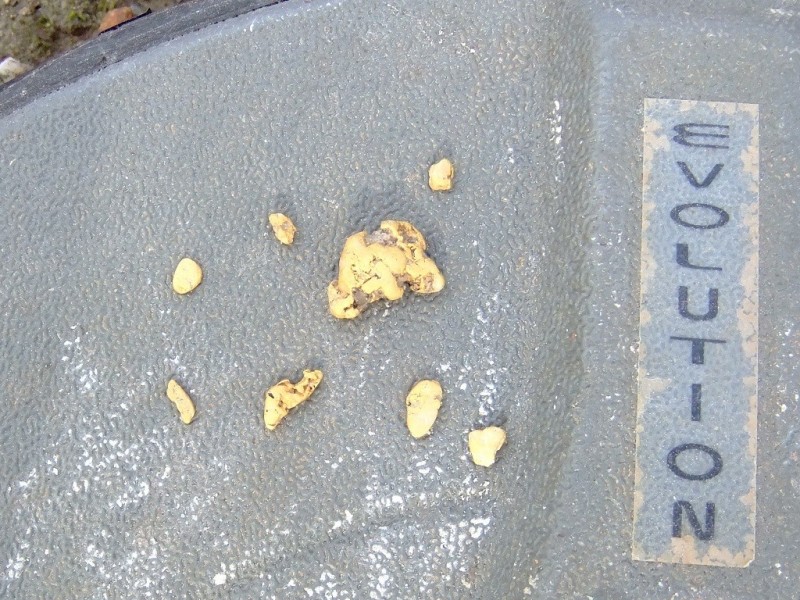
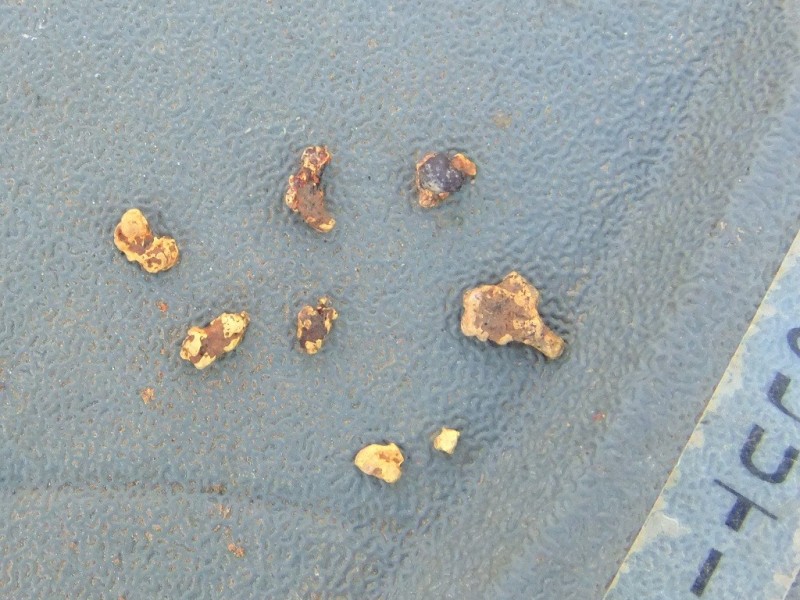
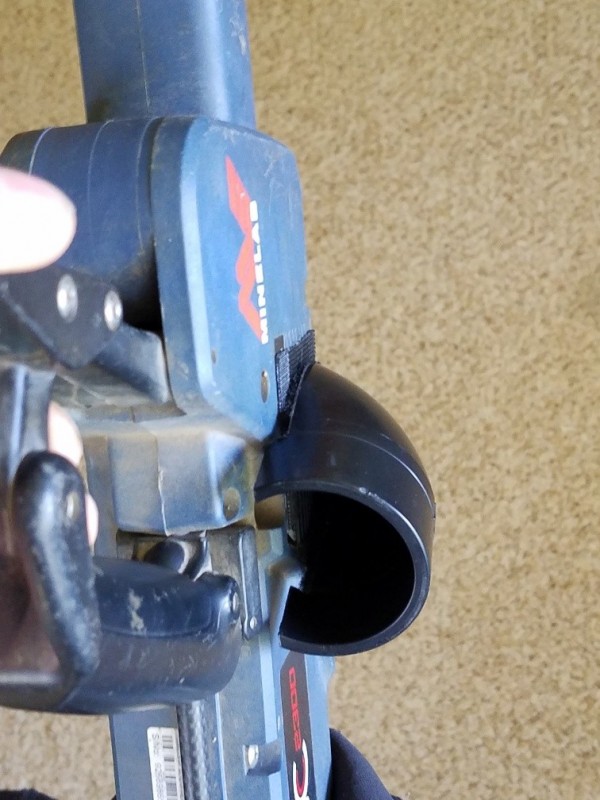
.thumb.jpg.ac5e8ee36e43bcab745dbc623fcf1874.jpg)
